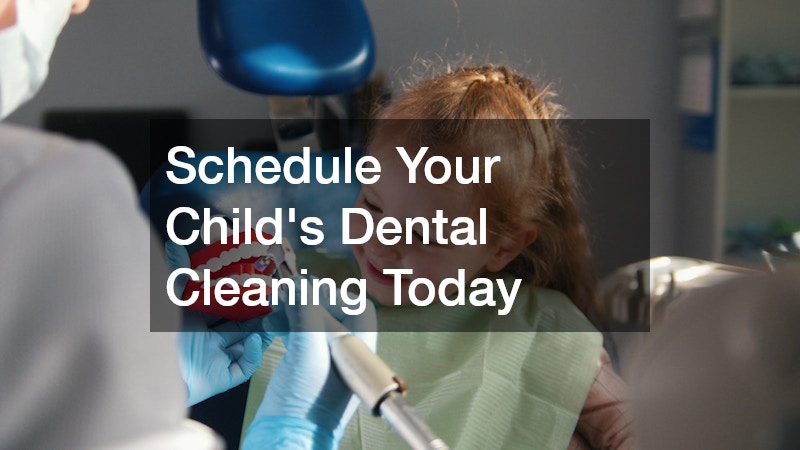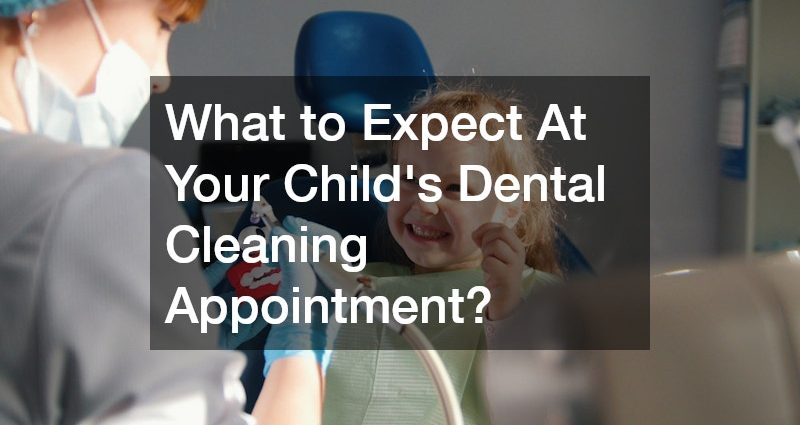
Routine pediatric dental cleanings are essential for maintaining your child’s oral health and setting the stage for a lifetime of healthy smiles. These visits do more than just polish teeth—they help prevent cavities, detect potential dental issues early, and make children comfortable with visiting the dentist. Knowing what to expect during your child’s cleaning can help ease anxiety and ensure a positive experience for both you and your child.
Why Are Regular Pediatric Dental Cleanings Important?
Promoting Lifelong Dental Health
Pediatric dental cleanings remove plaque and tartar buildup that even thorough brushing and flossing can miss. This helps prevent gum disease and keeps your child’s teeth strong as they grow.
Preventing Cavities and Tooth Decay
Children are especially prone to cavities due to their developing brushing habits and love for sweets. Professional cleanings eliminate bacteria that can lead to decay, protecting baby and permanent teeth alike.
Establishing Healthy Oral Hygiene Habits
When children visit the dentist regularly, they learn the importance of caring for their teeth. These positive early experiences encourage consistent brushing and flossing habits at home.
Reducing Dental Anxiety
Frequent pediatric dental cleanings help normalize dental visits for kids, reducing fear and anxiety. Familiarity with the dentist and hygienist builds comfort and confidence over time.
Monitoring Dental Development
Each cleaning gives your child’s dentist an opportunity to monitor tooth growth, alignment, and gum health. Early detection of potential issues ensures timely intervention and fewer complications later.
What Should You Do Before the Appointment?
Preparing Your Child
Start by talking to your child about their upcoming visit in positive, simple terms. Explain that the dentist will help clean their teeth to make them strong and shiny.
What to Bring
Bring your child’s dental history, insurance details, and any recent medical information. For younger children, a comfort item like a stuffed animal can help them feel at ease.
Understanding the Procedure
Explain that during pediatric dental cleanings, the dentist will count their teeth, clean away “sugar bugs,” and maybe take pictures (X-rays) of their teeth. This helps demystify the process.
Setting Expectations
Role-play the appointment at home by practicing opening wide and pretending to brush or polish teeth. This can make the real visit feel more familiar.
Addressing Anxieties
If your child feels nervous, reassure them that the dentist’s job is to keep their smile healthy. Avoid words like “pain” or “shot,” focusing instead on comfort and cleanliness.
What Happens During a Pediatric Dental Cleaning?
Initial Examination and X-rays
The visit typically begins with an oral exam. The dentist checks your child’s teeth, gums, and jaw alignment. X-rays may be taken to look at developing teeth and ensure everything is progressing normally.
Professional Teeth Cleaning
The dental hygienist gently removes plaque and tartar buildup using specialized tools. This step is completely safe and painless. After cleaning, the teeth are polished with a kid-friendly flavored paste that makes them feel smooth and clean.
Fluoride Treatment
A fluoride varnish or gel is applied to strengthen enamel and prevent future cavities. It’s a quick and effective part of the pediatric dental cleaning process.
Brushing and Flossing Demonstration
The hygienist often demonstrates proper brushing and flossing techniques in a fun, interactive way—sometimes letting children practice with a mirror or model.
Dentist Feedback and Recommendations
After the cleaning, the dentist discusses your child’s oral health, provides brushing and dietary tips, and answers any questions you may have.
How Can Parents Support Their Child During the Appointment?
Be a Positive Role Model
Show enthusiasm about dental visits and talk positively about your own experiences. Children pick up on your attitude and mirror your behavior.
Encourage Questions
Let your child ask the dentist questions. This builds curiosity and confidence while making them feel more involved in their care.
Offer Comfort and Support
Depending on the dental office’s policy, you may be able to stay in the treatment room. Your presence can reassure your child and make the experience smoother.
Celebrate the Visit
After the cleaning, praise your child for their bravery. A small reward, like a sticker or extra story time, reinforces the positive experience.
Build a Positive Association
Talk about the visit afterward as something fun and beneficial. Remind your child how clean their teeth feel and how proud you are of them for taking care of their smile.
What to Do After the Appointment?
Review the Dentist’s Recommendations
Go over any feedback from the dental team about brushing habits, fluoride use, or follow-up care.
Implement New Habits
Encourage your child to apply what they learned—like brushing in circles or flossing more gently. Consistency builds lifelong oral health.
Schedule the Next Visit
Dentists typically recommend pediatric dental cleanings every six months. Booking the next appointment before you leave helps maintain a regular routine.
Maintain Oral Hygiene at Home
Help your child brush twice daily with fluoride toothpaste, floss regularly, and limit sugary snacks and drinks.
Address Any Sensitivity
Some children may experience mild gum tenderness after a cleaning, which usually fades within a day. If discomfort persists, contact your dentist.
Pediatric dental cleanings are a vital part of maintaining your child’s oral health. They prevent cavities, teach good hygiene habits, and build comfort with professional dental care from an early age. By preparing your child, supporting them through each visit, and continuing great habits at home, you’re helping ensure a lifetime of strong, healthy smiles. Regular cleanings not only protect your child’s teeth today but also set the foundation for confident oral health well into the future.


